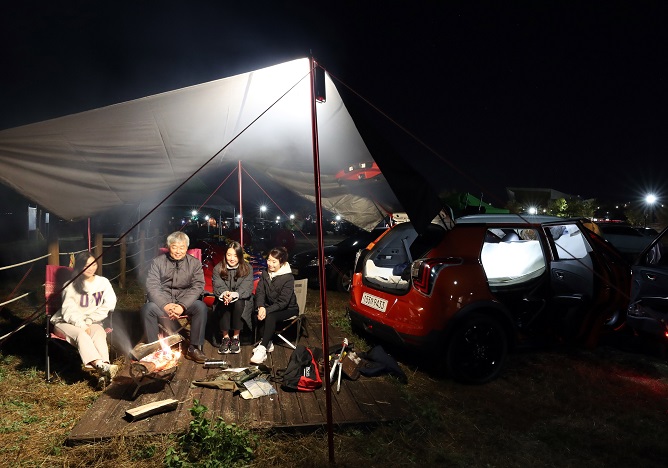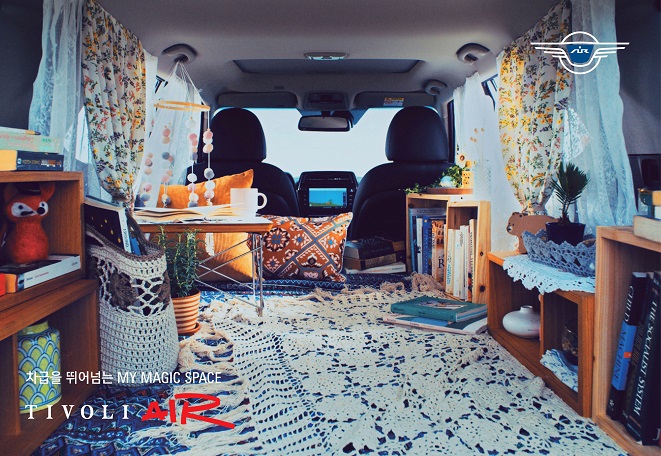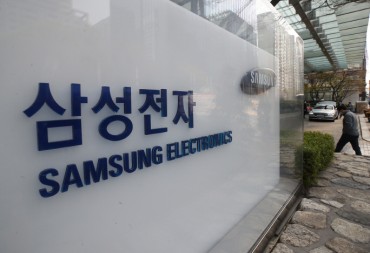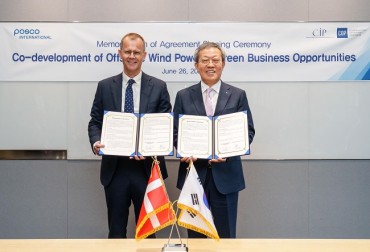
Visitors enjoy a barbecue at an auto camping site in Sangju, 270 kilometers southeast of Seoul, on Oct. 25, 2020, during a car camping festival. (Yonhap)
SEOUL, Nov. 13 (Korea Bizwire) — Kim Young-rim loves to travel abroad, but she had to give up her holiday plan this year due to the prolonged coronavirus pandemic.
The outgoing interior designer recently bought a Ford Explorer, a seven-seat sports utility vehicle (SUV), from a local used car dealer, and hit the road with her husband on the same day she made the purchase.
When they arrived in Gangneung, an eastern coastal city, around midnight after three hours of driving, they didn’t check in to one of the hotels that line the beach.
Instead, they folded the vehicle’s rear seats flat and slept on an air mattress until the sunrise woke them up.
“I really needed something to change my mood,” the 41-year-old Seoul resident told Yonhap News. “I chose an SUV with plenty of cargo space and flat-fold seats to load up camping supplies and spend a night in the car.”
With overseas vacation options wiped out by COVID-19 precautions, the idea of having an SUV is gaining fresh appeal for those who want to leave home for domestic trips.
Moving and sleeping in a car suits the rising appetite for “untact travel,” which minimizes contact with other people, also offering an option for cheap getaways.
“I still don’t feel comfortable taking public transportation and staying in hotels due to risks of getting the coronavirus,” Kim said. “With a smartphone and an auto speaker, I can listen to my favorite music or watch movies in a scenic place.”

This photo provided by Hyundai Motor Co. on Sept. 17, 2020, shows a couple enjoying car camping. The automaker launched a platform that lends sports utility vehicles and camping supplies, called “Wheelping,” to meet growing demand for car camping.
While big camping vans and recreational vehicles have better beds and more amenities, such as stoves, fridges and even showers and toilets, weekend campers are turning to more affordable, versatile SUVs.
Sales figures illustrate the trend.
The total number of compact SUVs by five local automakers — Hyundai Motor Co., Kia Motors Corp., GM Korea Co., Renault Samsung Motors Corp. and SsangYong Motor Corp. — sold in the domestic market stood at 154,890 in the first nine months of this year, up 42.2 percent from a year earlier, according to industry data.
The rise of SUVs contrasted with slowing sales of compact sedans, which saw a 8.7 percent fall on-year to 88,209 over the same period.
And marketers don’t miss the chance to boost sales of their SUVs by advertising their cars with fold-flat seats as best for “chabak” (sleeping in car).
Three-row SUVs, such as Hyundai’s Palisade and Kia’s Sorento, are promoted as “family cars” with large cargo space and rear seats that can fold flat to 180 degrees.
Compact SUVs, including Hyundai’s Venue and Kia’s Seltos, target millenials who want to use their cars for various purposes, including camping, workroom and private space.
“Large SUVs and vans are better for comfortable sleep with more space, but compact SUVs are also gaining popularity among car campers with more customized design, larger interior space and additional accessories needed for sleeping,” a Hyundai Motor public relations official said.
To make it easier for car camping beginners, Hyundai Motor in September launched “Wheelping” (wheel+camping) to lend out its popular five-seat SUVs, Santa Fe and Tucson, for two days, along with other camping supplies.

SsangYong Motor Co.’s new compact SUV, Tivoli Air, is shown in this photo provided by the automaker on Sept. 28, 2020. The vehicle’s back seats can be folded flat to allow drivers to load up supplies and use the space for various purposes.
In addition to the marketing efforts, major automakers have tailored designs of their compact SUVs with a longer body and a larger cargo space to make it handy to load up more equipment, and even sleep.
SsangYong Motor last month launched the new Tivoli Air with a wider space and longer body, showcasing various concepts for different life styles.
“Tivoli Air is a compact SUV that enables a 185-centimeter-tall adult to sleep comfortably in the car,” SsangYong Motor said in a release.
“Its 720 liter cargo space is wider than other midsize SUVs to support a more active lifestyle for users who are tired of the pandemic.”
Some automakers even sell customized camping supplies for their popular SUV lineup to enhance outdoor experiences.
Renault Samsung last month launched five new camping supplies for its XM3 and QM6 SUVs, in addition to the air mattress and car tent, to cater to needs of car campers.
Industry watchers said rising interest in SUVs is expected to continue due to travel restrictions amid the coronavirus pandemic.
“As coronavirus has increased demand for domestic travel, preferences for SUVs will remain for a while,” said Lee Jee-han, a researcher at Korea Automobile Manufacturers Association.
“Automakers are expected to showcase customized designs of vehicles for leisure activities to catch up with the latest trend.”
(Yonhap)






